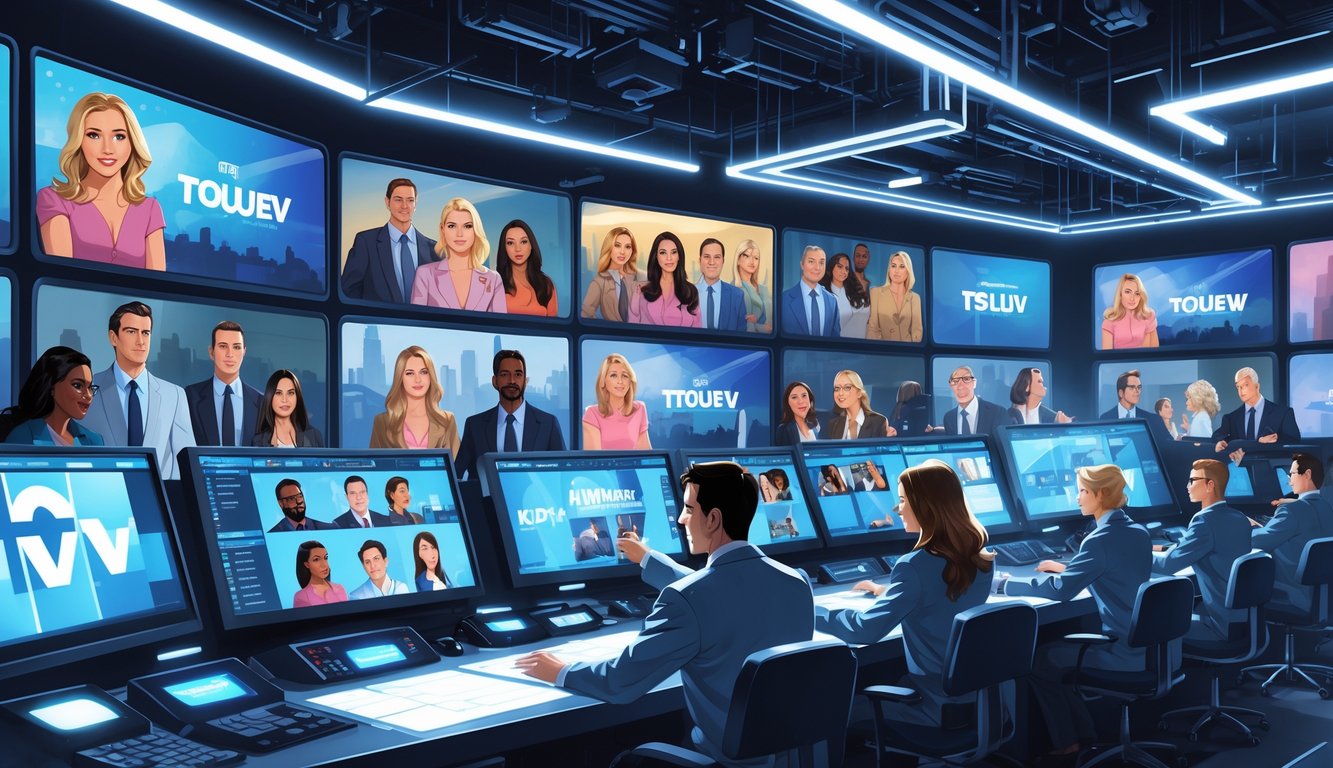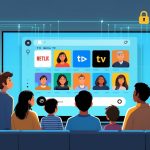
The Evolving Media Landscape
Every headline screams “cable is dying,” but honestly, networks toss their lineups around so much it feels like a dealer on hour 12 of blackjack—no warning, no logic. Disney axes a tentpole, Warner Bros Discovery rebrands everything, and—full disclosure—I have no clue what channel will air my favorite garbage reality show next week. Executives keep blaming “market realities,” but this all looks like panic, not planning.
Legacy Media Adapts to Change
Last week, MSNBC spun off a channel with zero warning, and then suddenly Lionsgate’s launching some new “independent” network. Flagships get shuffled like nobody’s ever heard of a remote. These media dinosaurs keep hammering away at cable bundles, but the dream died the second streaming started making the shows people actually talk about.
Contracts? Don’t get me started. Syndication, exclusivity, affiliate fees—it’s like an ant colony under the fridge. Channels just disappear, and viewers get stuck in TV limbo. Paramount wrote down $6 billion, Warner torched $9.1 billion—does that count as adapting? Or just lighting money on fire to look busy?
Competition in the Digital Era
Now it’s just chaos. Try finding a single live news show—paywalled one week, “free with ads” the next. Direct-to-consumer subscriptions, app updates, content split across a dozen platforms; the media landscape just threw out the playbook.
Netflix, Apple TV+—they’re burning cash on “exclusives.” One exec (off the record, obviously) said you have to spend like a lottery winner just to keep buzz alive, then act shocked when cable networks lose subscribers faster than my houseplants wilt. Streaming’s not just “flexible”—it’s a full-on original content arms race, and cable’s schedule is a fossil. David Zaslav (I think?) said “media landscape is evolving,” then split Warner Bros in half and left everyone guessing which half actually makes money.
Level playing field? Not a chance. Digital giants skip all the old bottlenecks, while legacy media is still fighting over licensing like it’s 2012. Sometimes I miss the predictability. At least back then, nobody yanked a whole series just to launch some app I’ll delete next week.
Implications for News Programming
Trying to follow these overnight schedule swaps feels like hunting for matching socks and ending up with one Christmas leftover. There’s never any warning or real explanation, but somehow everything—viewership, staffing, even what counts as “breaking”—just morphs, and nobody on air will admit it.
Cable News in Flux
What actually drives me nuts? CNN randomly moved Anderson’s show, MSNBC doubled down on endless panel chatter, Fox News swapped the set decorations and called it a “strategy.” Check out the way cable and broadcast news split on coverage—hard news gets shoved aside when commentary is easier or cheaper, or just riskier in that weird “audience engagement” way.
If you ask a neurologist, all this format-jumping rewires audience habits. CNBC suddenly yells “breaking markets coverage,” but the only thing that breaks is viewer patience. Scheduling chaos just confuses people or pushes them deeper into digital rabbit holes (Fox News Digital, OutKick—yeah, I see you). I used to track bias swings by the hour across Fox, MSNBC, CNN, but now the chart’s unreadable. Median reliability sits in the mid-30s, if you trust these rankings, but that doesn’t explain why my neighbor just quit watching altogether.
News-Gathering Operations and Staffing
Picture this: in the middle of a story pitch, someone gets a text—time slot moved, anchor benched, half the field reporters reassigned. There’s no memo, just group chat chaos and a new roster posted by some intern. CNBC’s business unit shrank so fast it’s a miracle anyone’s left who can pivot from Wall Street to wildfire coverage. (The sports desk? Don’t even ask.)
Producers skip lunch because they’re rewriting rundowns, cobbling together last-minute anchor pairings (and wow, the suit color clashes on air are brutal). The decline of legacy cable news isn’t just about viewers leaving, it’s a nightmare for newsrooms—beat reporters get less notice, editors “triage” constantly, and everyone pretends to know what’s next but it’s just frantic Slack pings. Freelancers and “digital-first” teams? They kind of win, I guess. They treat chaos like it’s Tuesday, chasing viral clips while old-school anchors read scripts they’ve never seen before.
Future Trends and What to Expect Next
Typed three emails, deleted two, don’t even know if anyone’s reading. Everyone’s panicking about where their shows landed—industry’s moving so fast it barely lets you breathe. Cable subscribers are vanishing faster than my snacks during a late-night Law & Order binge, and the networks keep “innovating” in ways that mostly just change the channel number.
Subscriber Trends and Predictions
Wild to think—ten years ago, every house had that clunky cable box. Now, Pew says we dropped from 100 million U.S. pay-TV homes in 2014 to under 60 million. My neighbor’s grandma still pays for a bundle she hates (habit?), so someone’s keeping cable alive, but streaming’s gobbled up the younger crowd. Recent stats say sports and live events prop up cable, but even those are barely hanging on—live ratings keep tanking, with flagship channels showing double-digit drops for three straight quarters, if Nielsen’s not lying.
Ever try to cancel cable? Five phone calls and a retention script that feels like psychological torture. With all the mergers, spinoffs, and networks like Boomerang probably going extinct soon (shutdown watch list here), I honestly don’t know if the subscriptions people cling to will exist next spring. Makes me want to throw out every remote and just start over—except for local news. Try getting election night coverage without cable. It’s like reading tea leaves.
The Traditional TV Model Going Forward
Every exec I hear from acts like TV’s just “evolving,” but look at the money—Comcast, Warner Bros. Discovery, Lionsgate, they’re all flinging cable assets into new holding pens (breakdown here). That’s not optimism. That’s a quiet funeral. Ad revenue zigzags, then nosedives for non-sports cable, and even the big networks admit the future’s in digital bundles they can’t really control.
What does “basic cable” even mean now? Premium series, sports, even local stations are getting bundled through apps. NBC as a cable channel? Or is it a streaming add-on? Some Comcast rep tried to explain why “channel neighborhoods” matter, but I was already eyeing four streaming free trials on my phone. If you want to see “traditional TV,” check hotel bars during playoffs. At home, it’s just nostalgia. Advertisers want streaming engagement metrics, not old primetime slots, so honestly—who’s defining “traditional” anymore?



